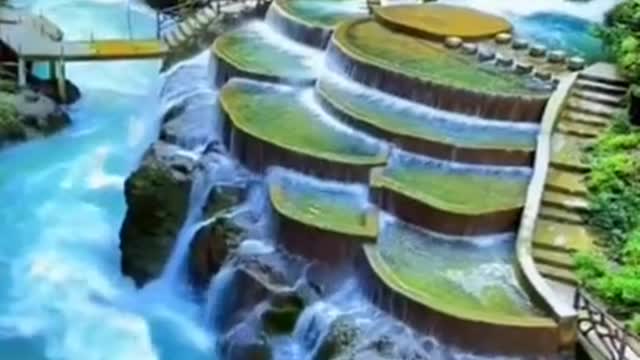Premium Only Content

Most beautiful place| edit by respect your owner please |
Ask any avid nature traveler how he or she first began to make a lifelong attachment to the outdoors, the natural world or a particular species of wildlife, and you’ll get as many anecdotes as the individuals you query. It may have started with a childhood, weekend camping trip and nights spent under the stars, a road trip to an iconic national park with parents, a first fishing expedition or even a backyard fort cobbled together on Saturdays with materials found in the woods.
But what exactly is nature, this thing that once experienced keeps drawing us in and tugging at our hearts? Is there one, conclusive definition of it?
According to The Merriam-Webster Dictionary, nature is “a creative and controlling force in the universe,” “the external world in its entirety” or “humankind’s original condition.” The New Oxford American Dictionary describes nature as “the phenomena of the physical world collectively, including plants, animals, the landscape, and other features and products of the earth, as opposed to humans or human creations”; “the basic or inherent features of something, especially when seen as characteristic of it”; or “the innate or essential qualities or character of a person or animal.”
By reading these official definitions, you might conclude that nature is what’s inside us, is everything but what’s inside us or is something external that controls our world.
I think it’s time we look to the poets for a better understanding of the term nature.
Pixabay
Almost every outdoor enthusiast has an anecdote from childhood about how nature first became a personal passion.
What the poets and artists say: kinship and clarity; communication and colors
In defining nature, 19th-century, American poet Ralph Waldo Emerson put it succinctly: “Nature is a mutable cloud which is always and never the same.” That may be the most lyrical description of the term that I’ve ever read.
Other attempts by various poets, nature writers and even songwriters fall into a category I call “kinship,” where nature acts as the connector between all things. As William Shakespeare wrote, “One touch of nature makes the whole world kin.”
The thought expressed by songwriter L. Wolfe Gilbert is along this same line of thinking: “Those who find beauty in all of nature will find themselves at one with the secrets of life itself.” Natural-science writer Loren Eiseley wrote, “One could not pluck a flower without troubling a star.” And, 17th-century scientist Blaise Pascal expresses it this way: “The least movement is of importance to all nature. The entire ocean is affected by a pebble.”
A second group of portrayals for the word nature I would place into the “clarity” classification. Bill Watterson, creator of the popular Calvin and Hobbes comic strip writes, “If people sat outside and looked at the stars each night, I’ll bet they’d live a lot differently.” Albert Einstein penned, “Look deep into nature, and then you will understand everything better.” Artist Vincent Van Gogh once said, “I experience a period of frightening clarity in those moments when nature is so beautiful. I am no longer sure of myself, and the paintings appear as in a dream.” And this from John Muir: “The clearest way into the universe is through a forest wilderness.”
Pixabay
“One could not pluck a flower without troubling a star,” said American anthropologist and natural-science writer Loren Eiseley.
Auguste Rodin, a 19th-century French sculptor, voiced a third category In which we could place nature depictions: nature as communication. He believed that “the artist is the confidant of nature; flowers carry on dialogues with him through the graceful bending of their stems and the harmoniously tinted nuances of their blossoms. Every flower has a cordial word which nature directs towards him.”
But my favorite definitions of nature fall into a fourth set: nature as color. For example, French painter Edouard Manet wrote “there are no lines in nature, only areas of color, one against another.” Ralph Waldo Emerson mentioned that “nature always wears the colors of the spirit.” And child poet Mattie J. T. Stepanek said,
-
 13:55
13:55
itsSeanDaniel
2 days agoWOKE Nutjob Liberal Finally Proved JUST HOW DUMB She Really is
1054 -
 8:01
8:01
MattMorseTV
10 hours ago $5.58 earnedHe's ACTUALLY doing it...
65.9K57 -
 15:04
15:04
GritsGG
14 hours agoHow the Rank 1 Player Warms Up on Warzone Before Stream!
6.57K -
 1:54:43
1:54:43
Side Scrollers Podcast
18 hours agoVoice Actor ROASTED For Racist Double Standard + Influencer FELONY After Con Threat | Side Scrollers
26.1K7 -
 11:03
11:03
The Pascal Show
18 hours ago $0.66 earned'THAT BABY IS GONE!' Neighbors Break Silence On Emmanuel Haro Case... Wildlife Took Remains?!
4.41K -
 LIVE
LIVE
Lofi Girl
2 years agoSynthwave Radio 🌌 - beats to chill/game to
313 watching -
 2:54:09
2:54:09
Badlands Media
15 hours agoDEFCON ZERQ Ep. 007: Flynn, Q Signals, and the Venezuela Strike
116K58 -
 2:29:05
2:29:05
FreshandFit
6 hours agoOwen Shroyer leaves Alex Jones But Here's the Truth!
23.2K19 -
 2:04:10
2:04:10
Inverted World Live
11 hours agoJapanese Memory Eraser | Ep. 101
105K19 -
 2:42:52
2:42:52
TimcastIRL
9 hours agoTrump To Deploy National Guard To Chicago, Baltimore, Democrats Call To Resist | Timcast IRL
229K101